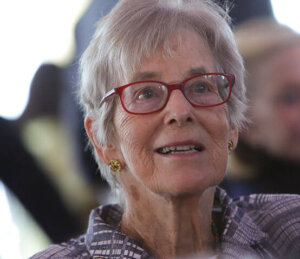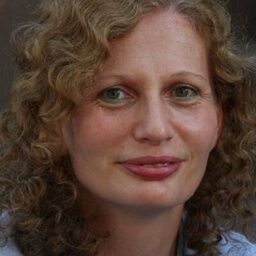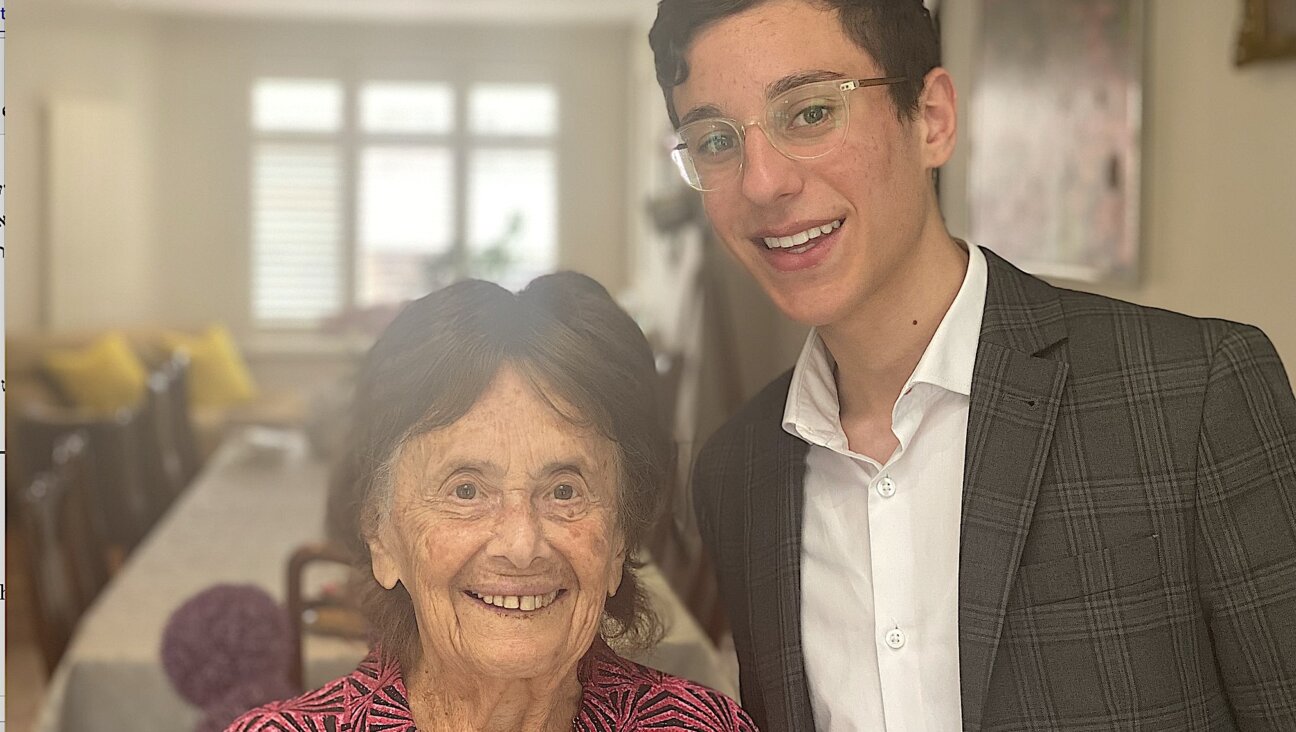The billion-dollar donor’s mother was a philanthropist, too: She helped Jews fleeing Hitler
Ruth Gottesman, whose $1 billion gift eliminates tuition at a medical school, grew up in a family known for altruism

This 1932 photo shows Eleanor Kohn Levy, seated in the center, with her daughters: Susan, to her left, Ruth, in her lap, and Ellen, to her right. Courtesy of Jewish Museum of Maryland (Catalog No. 2002.079.280) and Janet Fishbein (daughter of Susan Levy Bodenheimer), Ellen Patz, Ruth Gottesman & Vera Mendelsohn Mitnick.
Ruth Gottesman is the donor whose $1 billion gift eliminates tuition at Albert Einstein College of Medicine in the Bronx. That money comes from a fortune left by her husband, Wall Street investor David Gottesman.
But Ruth Gottesman also grew up in a family known for philanthropy and activism, especially on behalf of Jewish causes. Her parents, Lester Levy and Eleanor Kohn Levy, helped Jews seeking to flee Europe during World War II. That work included finding homes for child refugees. Gottesman’s parents adopted one of those refugees, Vera Mendelsohn Mitnick, and raised Mitnick in their Baltimore home alongside Gottesman and her two sisters.
Gottesman, who is 93, turned down interview requests from the Forward, and neither Mitnick, who lives in a nursing home, nor Mitnick’s daughter, responded to queries.
But a family archive at the Jewish Museum of Maryland, along with other public information, describes the family’s altruism and its impact. The museum archive includes an oral history interview that Eleanor Levy, who died in 1994 at age 93, gave in 1991.
‘A tragic situation’
During the late 1930s, Levy said in the interview, “the American Jewish community was making every effort to save the German children whose parents were trying to get them out of the country — out of Germany — before the Holocaust.” A national council of Jewish federations pledged that if the children were allowed in, the council “would guarantee that they wouldn’t become public charges.” Levy estimated that “perhaps 1,000 children” were brought over. Every large city with a Jewish population took a group of them. Baltimore took 40.
“The need was so great, and it was such a tragic situation,” recalled Levy. “I came home to my family and asked whether they would be willing to sponsor a child.” Her husband and three daughters — Ruth and her sisters — were “very eager to help with the settling and making a new child feel at home.”
Levy was on the board of the Jewish Family and Children’s Services at the time. “We found out that there was a girl, just the age of my youngest daughter Ruth, coming to Baltimore, and that seemed very agreeable to my girls,” she said. “So when our Ruth was 10 and Vera Mendelsohn was 10, she came into our house.”
Mitnick’s parents were in Berlin, but Levy said the girl had “every expectation” that her parents would soon follow her. “Most of the children who came,” Levy said, “came expecting this to be a temporary thing, didn’t they? I think they were sent away by their parents with every hope of a reunion. In these days, it was not only difficult for Vera, it was difficult for all the children. They didn’t want to become too close. They held themselves apart, waiting. They didn’t want to become part of a new family. They were in a waiting period. It was very difficult.”
In the end, though, very few of those parents in Europe survived the war. Mitnick’s were among those who perished.
Mitnick eventually married, was “very happy,” and had three children of her own, Levy said, describing her as “a dearly loved permanent member of our family,” who regularly brought her husband and children to the Levys’ Friday night suppers.
Aiding other refugees

In addition to finding homes for Jewish children, Eleanor Levy, her husband Lester and her brother, Martin Kohn, were deeply involved in other “efforts to aid German refugees arriving in Baltimore,” according to the Southern Jewish Historical Society. Kohn organized the Jewish Welfare Fund to help settle more than 3,000 refugees in the area, all of whom had to be sponsored by Americans to get U.S. visas. Eleanor Levy, along with an aunt leading a chapter of the National Council for Jewish Women, was among those wading “through the bureaucracy on behalf of their German contacts,” according to Baltimore Jewish Living. Those efforts resulted in “numerous families, from distant cousins to total strangers,” getting out of Europe.
Gottesman’s father, whose family owned what was at one time the country’s largest manufacturer of straw hats, was also president of Baltimore Hebrew College and The Associated: Jewish Federation of Baltimore. Eleanor Levy was involved with The Associated group as well; the oral history in the museum’s archives was conducted on its behalf.
In addition, Gottesman’s parents helped found the Central Scholarship Bureau, which initially funded college for wards of a Jewish aid society. In the 1930s, the organization broadened its focus to help Black students and others with scholarships as well.
Professionally, Eleanor Levy was a social worker. She worked for state and local welfare departments, served on government commissions to improve foster care and devoted much of her time, professional and volunteer, to agencies focused on foster care and adoption.
Her oral history notes that the family’s philanthropic tradition extended back to earlier generations as well: Lester’s parents and grandparents also did charity work when Jewish immigrants from Eastern Europe began arriving on U.S. shores in the late 19th century.
Following in her parents’ footsteps

Like her parents, Gottesman not only gave tzedakah, but did it in a way that makes an immediate difference in the lives of ordinary people. In the past, nearly half of Einstein medical college students graduated with $200,000 or more in tuition loans. Gottesman’s $1 billion gift, the largest ever made to a U.S. medical school, allows alumni to launch careers as doctors with zero debt. Eliminating that burden could encourage more of them to go into primary care, where there is a huge unmet need for physicians, rather than staking out more lucrative medical specialties.
Gottesman is an emerita faculty member at Einstein specializing in learning disabilities. In 2008, she and her husband donated $25 million to the school for a medical research institute, an epigenetics faculty position and a clinical skills center.
She originally sought to donate the $1 billion anonymously, but eventually agreed to disclose herself as the source in the hopes of inspiring others with great wealth to make similar gifts. But she refused to let the school rename itself in her honor. “We’ve got the gosh darn name,” she was quoted by The New York Times as saying. “We’ve got Albert Einstein.”






















